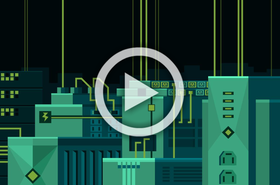Business leaders frequently face the critical task of identifying quality, reliable vendors to support their operations. Primarily, this responsibility involves ensuring that the products and services they are sourcing meet high standards of quality and reliability. With leaders in the data center industry, there are plenty of vendor decisions to be made, from network switches to fire suppression systems to ethernet cabling. When investigating a supplier, one of the most pertinent questions is where and who the product comes from in the first place.
In general, when it comes to sourcing essential equipment, a manufacturer that manages every aspect of production is almost always preferable. Such manufacturers offer greater control over quality, consistency, and coordination, reducing the risk of issues that can arise from outsourcing to third parties. By choosing vendors who maintain comprehensive in-house production capabilities, data center leaders can be assured that they’re receiving the most dependable, high-quality products that support their company's quest for uptime.
As an example, let’s look at backup generator enclosures. It goes without saying that choosing the right vendor for a backup generator is crucial, and when it comes to ensuring reliability and resiliency for your data center, selecting the right generator is only part of the puzzle.
A typically unnoted aspect of a backup power setup is the larger structure that houses it. While it’s common to overlook, a generator enclosure plays a crucial role in overall performance, safety, and serviceability.
If a generator enclosure needs to be outsourced to a third party, it’s important to work with a supplier that will facilitate this process seamlessly. Adding more people, locations, scheduling, and transport to the process can create plenty of snags and delays, so trustworthy project management on your behalf is a must. This is particularly true when it comes to the testing process of a third-party enclosure, which often occurs off-site.
This intensive inspection of the entire solution – including airflow, power usage, environmental standards, and more – can become cumbersome and complicated if not handled properly.
On the other side of the coin, there are many advantages to working with a generator manufacturer that builds its own enclosures. Working with a vendor who can engineer and manufacture your enclosure in-house means your backup power solution will be delivered as a complete end-to-end solution. The entire process is managed by one party all the way through its lifecycle, and the same people are working on every step of one large process. Because the teams are tighter, their alignment is also tighter.
Simply put, a factory-direct option requires fewer designers, fewer applications engineers, fewer sales associates, and fewer project managers. There is less communication required, and therefore less risk of miscommunication.
Perhaps the biggest hidden cost of using a third-party enclosure vendor is the literal financial cost, as, with third-party outsourcing, an additional layer of pricing margin must be factored into the enclosure fitting process.
When a manufacturer provides a factory-direct enclosure, they quote the price of the entire solution, including their markup for profitability. This streamlined approach typically results in a more straightforward and predictable cost structure.
However, when enclosures are sourced from third-party manufacturers, the situation becomes more complex and expensive. With the involvement of multiple vendors, each party applies its own markup to maintain profitability, leading to a cumulative increase in costs, and this compounded markup can significantly inflate the final price quoted to a data center. In a multi-genset project, this additional layer of cost margin can amount to very significant cost increases. It’s important for data center leaders to be aware of these factors, as they affect not only reliability and project management, but cost efficiency too.
Data center leaders are constantly weighing the pros and cons of different vendors, products, and services. With generator enclosures, as with many other products, there are key differences between manufacturers. Understanding these distinctions is essential, as opting for the right manufacturer can ensure fewer headaches, fewer markups, and a better overall experience. Conversely, choosing the wrong vendor can introduce the possibility of errors, costliness, and communication gaps.
When it comes to optimizing a data center supply chain, it all starts with excellent sourcing.
More from Kohler Energy
-

Sponsored Powering tomorrow: What role do diesel generators play in the future of clean energy solutions?
The future tech set to revolutionize data center power
-

-

Sponsored Empowering sustainability: What a polar explorer taught me about leadership, trust and data centers
Following the leader. Why advancing sustainability the data center industry – and beyond – will hinge on strong leadership and trust

